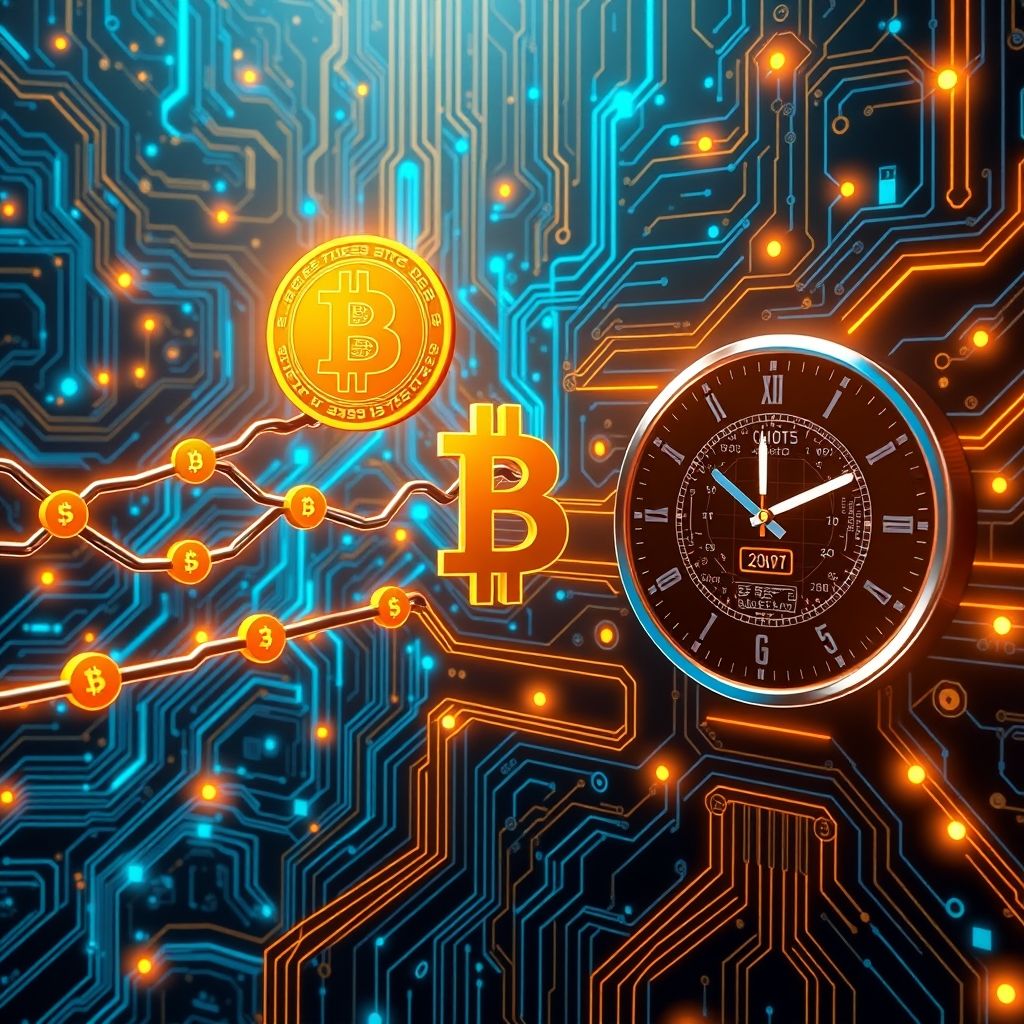How long does a Bitcoin transaction take to confirm?
How Long Does a Bitcoin Transaction Take to Confirm?
Ever tried sending Bitcoin and wondered, “When will this actually go through?” Youre not alone. Cryptocurrency transactions can feel like waiting for a message in a bottle to wash ashore—sometimes quick, other times dragging on for what seems like forever. If you’re diving into the world of crypto trading or just sending a quick send, understanding how long Bitcoin transactions take to confirm can make all the difference.

The Basics of Bitcoin Confirmations
When you hit send on a Bitcoin transaction, it doesn’t instantly arrive at its destination. Instead, it gets picked up by miners who verify your transaction and add it to the blockchain. This process is called confirmation—think of it as your transaction getting official approval. In the Bitcoin universe, each confirmation can be likened to a stamp of trust, with one being the initial kill shot, and more confirming it’s been legit.
Typically, a Bitcoin transaction takes about 10 minutes to receive its first confirmation. But don’t think that means it’s set—you might need multiple confirmations if you’re dealing with larger amounts or exchanges that demand higher security. Most transactions stabilize after six confirmations, which can stretch your wait to around an hour or more during network congestion.
Factors That Influence Confirmation Times
Network Traffic and Congestion
Imagine a busy highway—when traffic is thick, cars crawl along. During peak times, Bitcoin’s network sees a surge in transactions. When thousands of people try to send coins simultaneously, miners have a backlog of transactions to process. If your transaction gets bumped down the queue, expect a longer wait.
Fee Size
Think of transaction fees like tips for a cab—pay a little extra, and the driver (or miner) will prioritize your ride. Paying higher fees usually means your transaction gets confirmed faster because miners prefer transactions with more lucrative incentives. During busy times, if your fee is too low, your transaction might linger in the mempool (the pool of unconfirmed transactions).
Block Size and Blockchain Capacity
Bitcoin blocks are mined roughly every ten minutes, and each block has a limit on how much data it can hold. During times of high activity, the blocks fill up faster, which can delay confirmations. Some users try to sync their fees with current network conditions—tools like mempool tracking sites give real-time insights on average fees.
The Future of Bitcoin Confirmations and Web3 Expansion
We’re living in an exciting era where the decentralized finance (DeFi) landscape is booming. From forex and stocks to commodities and options, assets are moving onto digital rails—smart contracts, tokenization, and AI-driven trading are transforming how we view financial markets. Bitcoin stands as the OG of this movement, and understanding its confirmation process is foundational for savvy traders.
Using advanced tech to refine transaction speeds is a game-changer. Layer 2 solutions like the Lightning Network aim to speed things up by processing transactions off-chain and settling back onto the main chain later. That’s making instant payments and microtransactions more feasible—a revolution for everyday users and merchants alike.
Comparing Crypto to Traditional Assets
While stock or forex markets rely on centralized exchanges with their own delays, crypto offers a more open, borderless system. Confirmations, though still subject to network load, are often faster than traditional bank transfers, especially across borders. But it’s not all smooth sailing—regulatory hurdles and network upgrades pose their own challenges.
Reliable Strategies
If you’re trading or transferring sizable amounts, consider timing your transactions during off-peak hours, and always tweak your fee settings. Leverage real-time mempool analytics and transaction fee estimators to stay ahead. And for the risk-takers, some go for high-leverage trading, but remember: the rapidly-changing confirmation landscape can impact your exit strategy.
Embracing the Decentralized Future
Decentralized finance is no longer just a buzzword; it’s reshaping how we think about assets. With more sophisticated smart contracts and the rise of AI-driven trading algorithms, the landscape is set for a new wave of innovation. That said, hurdles like network scalability and security are still front and center.
As blockchain technology evolves, so will confirmation speeds—making transactions quicker and more reliable. Layer 2 solutions and sidechains are promising paths forward, ensuring Bitcoin and other cryptocurrencies remain competitive. The integration of AI and automation will further smooth out the trading experience, reducing latency and risk.
The Road Ahead
Imagine a future where your Bitcoin transactions feel almost instant, where smart contracts execute seamlessly, and AI guides your investment decisions with pinpoint accuracy. The foundation laid now by understanding confirmation times and network factors will be crucial.
If you ask me, the real promise isn’t just faster confirmations—it’s transforming how we trade and interact with assets in a decentralized, more inclusive world. Remember, the more you grasp how Bitcoin confirmation times fluctuate, the better you can navigate this dynamic digital economy.
Let’s move into a future where verifying transactions is faster than ever—embrace the revolution with confidence.